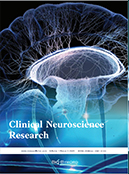Effect of Remote Ischemic Conditioning Combined with Arterial Thrombolysis on Patients with Ultra-Early Cerebral Infarction
Abstract
Objective: To observe the effect of remote ischemic conditioning + arterial thrombolysis in patients with ultra-early cerebral infarction. Methods: 60 patients with ultra-early cerebral infarction were used as samples, and this study was carried out from April 2022 to April 2023. The patients were randomly divided into Group A and Group B. The patients in Group A received remote ischemic treatment + arterial thrombolysis, whereas the patients in Group B received arterial thrombolysis. Methods: The coagulation indicators, inflammatory factors, quality of life, and adverse reactions of both groups were compared. Results: The blood coagulation indexes of the patients in Group A were better than those in Group B (P < 0.05); the inflammation indexes in Group A were lower than those in Group B (P < 0.05); the SF-36 scores in Group A were higher than those in Group B (P < 0.05); the adverse reaction rate in patients with cerebral infarction was lower than that in Group B (P < 0.05). Conclusion: Remote ischemic conditioning + arterial thrombolysis is effective and feasible in treating patients with ultra-early cerebral infarction, and it inhibits inflammation and improves coagulation function.
References
Ma C, Li S, Liang H, et al., 2023, Retrospective Analysis of the Curative Effect and Prognosis of Super-Selective Arterial Interventional Thrombolysis in Patients with Acute Progressive Brainstem Infarction Over a Time Window. Chinese Science and Technology Journal Database (Full-Text Version) Medicine and Health, 8(7): 36–39.
Yuan J, 2023, Study on the Influence of Treatment Time and Infarct Location on the Curative Effect of Intra-Arterial Thrombolysis in Acute Cerebral Infarction. Primary Medical Forum, 27(1): 35–37.
Zhang X, 2023, Analysis of the Prognosis and Influencing Factors of Intravenous Thrombolysis in Patients with Acute Internal Carotid Cerebral Infarction. China Minkang Medicine, 35(7): 20–22 + 32.
Li T, 2023, Analysis of the Curative Effect of Tirofiban on Cerebral Infarction with Perforating Artery Disease with Exacerbated Neurological Symptoms After Intravenous Thrombolysis with Alteplase. Chinese Science and Technology Journal Database (Full-Text Version) Medicine and Health, 5(1): 76–79.
Feng S, 2023, Analysis of the Curative Effect and Safety of Thrombolysis in the Lower Artery in the Interventional Treatment of Acute Cerebral Infarction. Chinese Science and Technology Journal Database (Full-Text Version) Medicine and Health, 7(6): 105–108.
Zhu X, Feng S, 2023, Study on the Efficacy of Transcatheter Selective Cerebral Arterial Thrombolysis in the Treatment of Acute Cerebral Infarction. Chinese Science and Technology Journal Database (Full Text Version) Medicine and Health, 4(5): 46–49.
Li Y, Li B, Dong X, et al., 2022, Efficacy of Mechanical Thrombectomy Combined with Urokinase Arterial Thrombolysis in Patients with Acute Cerebral Infarction and its Impact on Neurological Function. Chinese Medical Science, 12(3): 15–19.
Wan X, Lei B, Chen L, et al., 2022, Efficacy of Arterial Thrombolysis Combined with Interventional Therapy in Elderly Patients with Acute Cerebral Infarction and its Influence on Vp, Vm, DVp, DVm, PI, and CVR. Translational Medicine Journal, 11(2): 97–100.
Zhang L, Kong X, Li J, et al., 2022, Effects of Remote Ischemic Adaptation Combined with Intravenous Thrombolysis on Clinical Prognosis and Expression of Oxidative Stress in Patients with Acute Cerebral Infarction. Chinese Journal of Cerebrovascular Diseases, 19(9): 611–617.
Ding W, Wang X, Gao Q, et al., 2022, Effect of Remote Ischemic Postconditioning Therapy Combined with Alteplase on the Expression of miR-199a and miR-137 in Patients with Cerebral Infarction. Chinese Journal of Gerontology, 42(17): 4145–4148.

